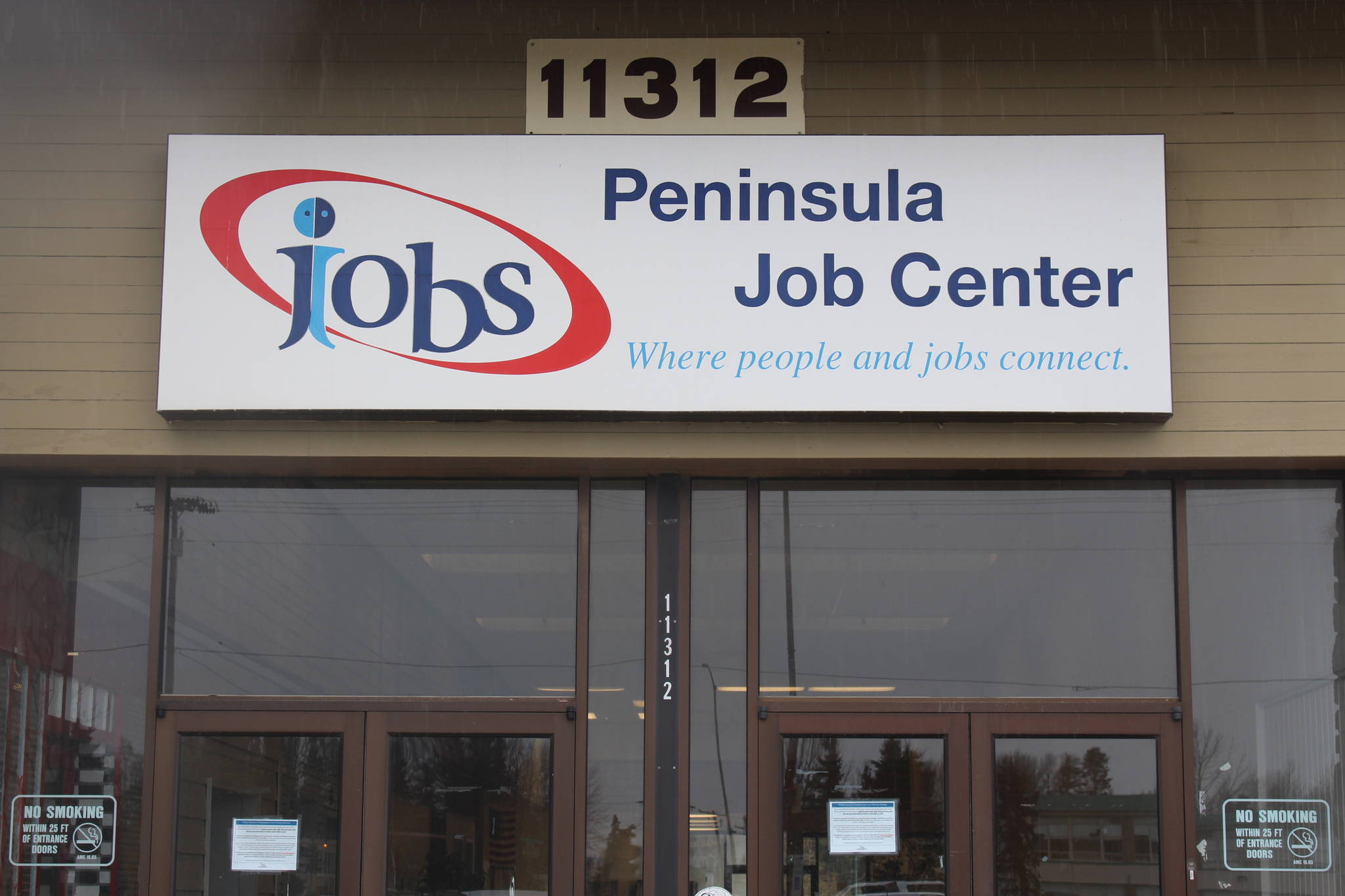State economists are just beginning to understand how COVID-19 might be affecting our state and local economy.
The global pandemic has shuttered and disrupted business across the world, including Alaska. Assessing the full impact of these closures and disruptions will take months, but the Alaska Department of Labor and Workforce Development has started that process by releasing baseline data and highlighting economic vulnerabilities in their April issue of Trends, a monthly magazine that covers statewide economic issues.
The April report focuses on short-term effects of the pandemic, which is April through the end of May. Future Trends issues will highlight midterm and long-term impacts related to COVID-19.
In April, Alaska employers would normally pay out more than $1 billion in private sector wages, the report said. The state says with “little doubt” wages will drop by “hundreds of millions of dollars” in the next two months due to COVID-19 shutdowns.
Unemployment Insurance claims have “soared” in recent weeks, the report said, with 12,007 Alaskans filing the week ending April 4, the most current week available. The total number of people filing for benefits in Alaska is nearly 50,000, or about 15% of the workforce this time of the year. The average weekly benefits for Alaskans on unemployment is $250 plus the $600 from the federal CARES Act.
“The current claim numbers far exceed anything in Alaska’s history,” the report said. “More increases are likely in the coming weeks before they plateau at a very elevated level for a while.”
Different parts of the state will feel the brunt of this economic crisis differently. Nearly all areas will see radically different spending patterns in April and May, the report said.
The Kenai Peninsula has a diverse economy, which in most cases is a good thing, Neal Fried with the Department of Labor and Workforce Development said.
Major industries that make up the borough’s main economic sectors are tourism, oil and gas, and fishing. Those industries are facing uncertainty as the summer months — peak season for tourism and fishing — approach.
“A preliminary analysis of businesses directly tied to summer tourism shows we’d have around 18,000 fewer jobs (statewide) during the July peak if there were little to no tourism, which seems likely at this point,” the report said.
Fried said the central peninsula is also likely to see impacts from the oil and gas industry. The peninsula should expect some job losses, coupled with little to no job gains in many sectors of the local economy. Oil prices have fallen to levels not seen since the early 2000s, and the state will face even starker choices between reduced government services and new taxes, the report said.
“Timing couldn’t be a whole lot worse,” Fried said.
On the Kenai Peninsula and in other Gulf Coast and Southeast Alaska communities, a major concern is whether seafood processing companies can operate this season, the report said.
The companies are often dependent on many international and nonresident workers. Travel restrictions may provide another obstacle for workers to get to communities and certain regions of the state.
“It’s too soon to say much about the peak salmon processing season of July and August, but capacity to process fish in April and May will be dramatically reduced because of worker supply,” the report said. “Secondary concerns include a reduction or shift in market demand for different products, and the implications for commercial fishermen if seafood processors can’t operate or can only operate at reduced capacity.”
The Kenai Peninsula will also be impacted by the cancellation of some 2020 summer cruise ship seasons. Although June through August are peak tourism months, businesses in the state would be hiring in March and April to prepare for the “anticipated 1.4 million” 2020 cruise ship visitors, the report said.
Some silver linings are that many visitors on the Kenai are Alaskans traveling south to recreate and that many of the seasonal employees in the area are people from out of state, Fried said.
Fried said the Kenai Peninsula is likely already seeing “big impacts” on the restaurants, bar and entertainment industry.
The report said businesses like gyms normally represent more than 3,000 jobs across the state, paying $5 million in wages. Gyms were ordered to close by Gov. Mike Dunleavy March 18, and are closed until further notice.
Restaurants and “other eating places” employed more than 21,000 Alaskans in April 2019, paying them more than $37 million in wages. Some restaurants have managed to stay open and shift their operations to accommodate social distancing orders.
The partial shutdown of the economy spurred on by the global pandemic will not only affect unemployed Alaskans. Alaskans who are retired, on paid leave or have the ability to work from home will not be “financially unscathed,” the report said.
In the short-term, unemployment benefits can replace lost wages, but not lost business profits. Citizens will eventually have to pay for the increased government spending on benefits, through higher taxes or reduced spending elsewhere, the report said.
Governments at all levels will also face additional costs to expand hospital and public health resources. In the Kenai Peninsula Borough, the assembly recently appropriated $125,000 for their office of emergency management to continue their public outreach, encouraging locals to slow the spread of COVID-19. The Kenai Peninsula Borough is also expected to face declines in various tax revenues.
“Unlike some economic shocks that affect specific industries in isolation, the scale and breadth of the disruptions related to COVID-19 will affect almost all of us in our various roles as workers, consumers, business owners, nonprofit agencies, government service providers, tax payers, and investors,” the report said.

